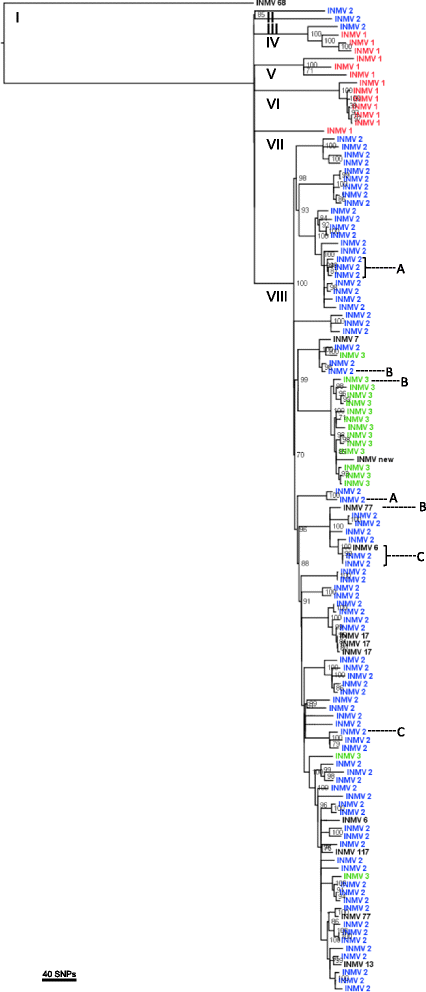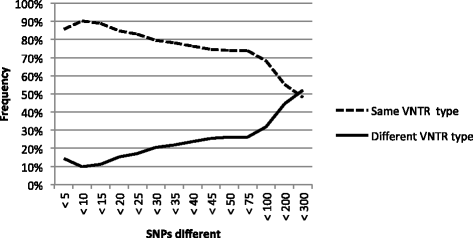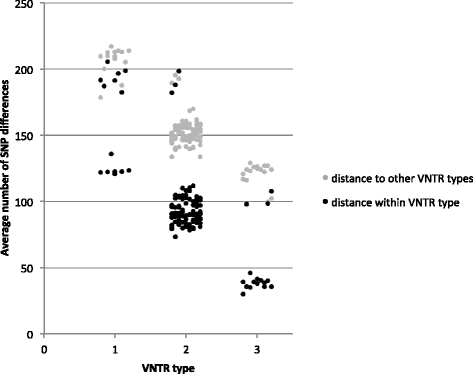Limitations of variable number of tandem repeat typing identified through whole genome sequencing of Mycobacterium avium subsp. paratuberculosis on a national and herd level
- PMID: 25765045
- PMCID: PMC4356054
- DOI: 10.1186/s12864-015-1387-6
Limitations of variable number of tandem repeat typing identified through whole genome sequencing of Mycobacterium avium subsp. paratuberculosis on a national and herd level
Abstract
Background: Mycobacterium avium subsp. paratuberculosis (MAP), the causative bacterium of Johne's disease in dairy cattle, is widespread in the Canadian dairy industry and has significant economic and animal welfare implications. An understanding of the population dynamics of MAP can be used to identify introduction events, improve control efforts and target transmission pathways, although this requires an adequate understanding of MAP diversity and distribution between herds and across the country. Whole genome sequencing (WGS) offers a detailed assessment of the SNP-level diversity and genetic relationship of isolates, whereas several molecular typing techniques used to investigate the molecular epidemiology of MAP, such as variable number of tandem repeat (VNTR) typing, target relatively unstable repetitive elements in the genome that may be too unpredictable to draw accurate conclusions. The objective of this study was to evaluate the diversity of bovine MAP isolates in Canadian dairy herds using WGS and then determine if VNTR typing can distinguish truly related and unrelated isolates.
Results: Phylogenetic analysis based on 3,039 SNPs identified through WGS of 124 MAP isolates identified eight genetically distinct subtypes in dairy herds from seven Canadian provinces, with the dominant type including over 80% of MAP isolates. VNTR typing of 527 MAP isolates identified 12 types, including "bison type" isolates, from seven different herds. At a national level, MAP isolates differed from each other by 1-2 to 239-240 SNPs, regardless of whether they belonged to the same or different VNTR types. A herd-level analysis of MAP isolates demonstrated that VNTR typing may both over-estimate and under-estimate the relatedness of MAP isolates found within a single herd.
Conclusions: The presence of multiple MAP subtypes in Canada suggests multiple introductions into the country including what has now become one dominant type, an important finding for Johne's disease control. VNTR typing often failed to identify closely and distantly related isolates, limiting the applicability of using this typing scheme to study the molecular epidemiology of MAP at a national and herd-level.
Figures




References
-
- Barkema HW, Hendrick S, De Buck JM, Ghosh S, Kaplan GG, Rioux KP. Crohn’s Disease in Humans and Johne’s Disease in Cattle - Linked Diseases? In: Krause D, Hendrick S, editors. Zoonotic Pathogens in the Food Chain. Wallingford: CABI; 2010. pp. 197–213.
Publication types
MeSH terms
LinkOut - more resources
Full Text Sources
Other Literature Sources

